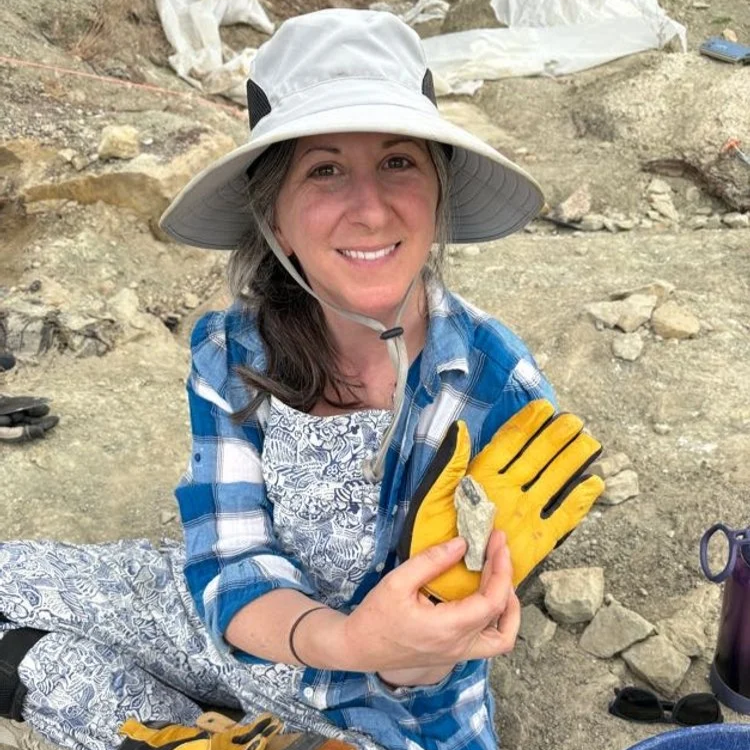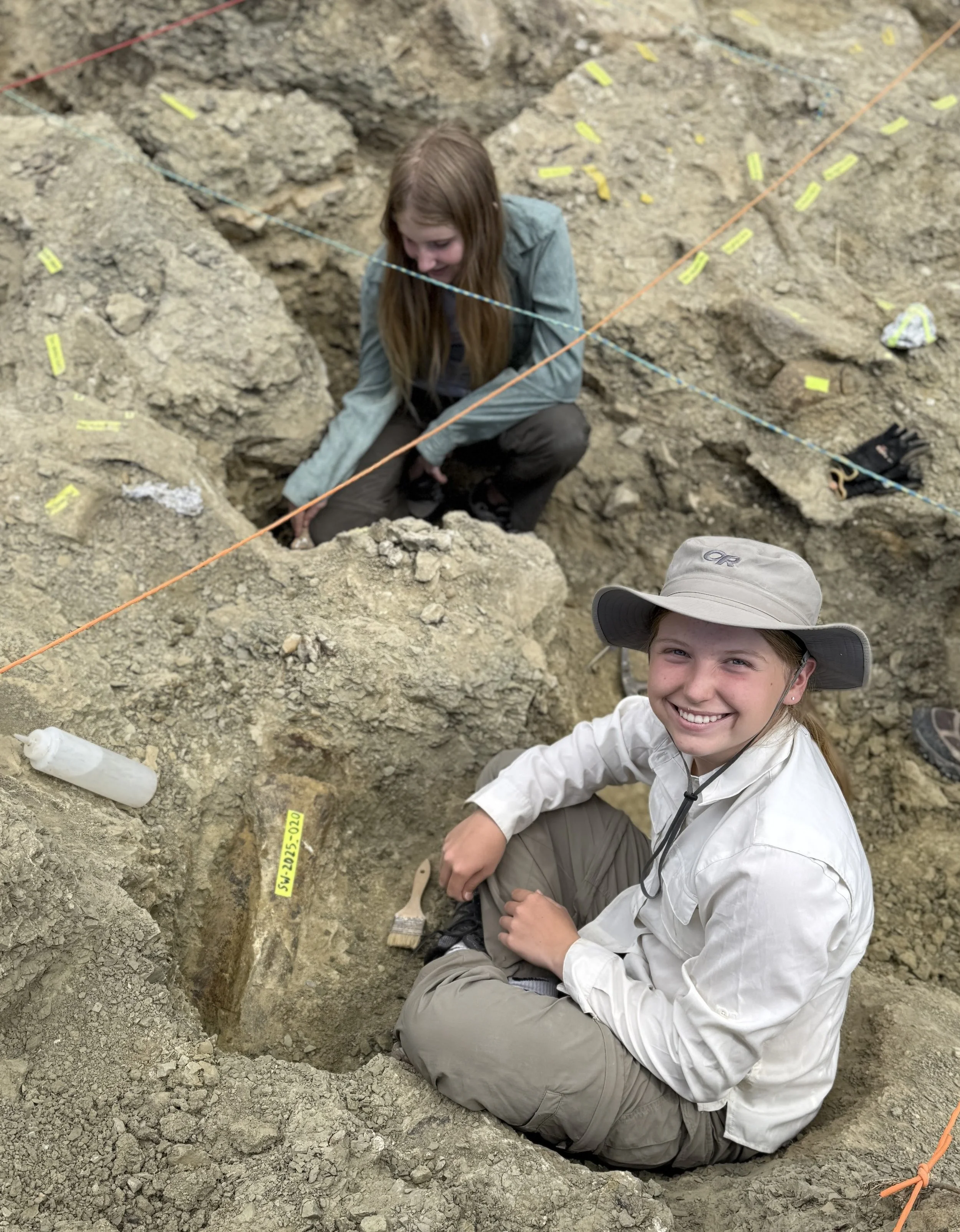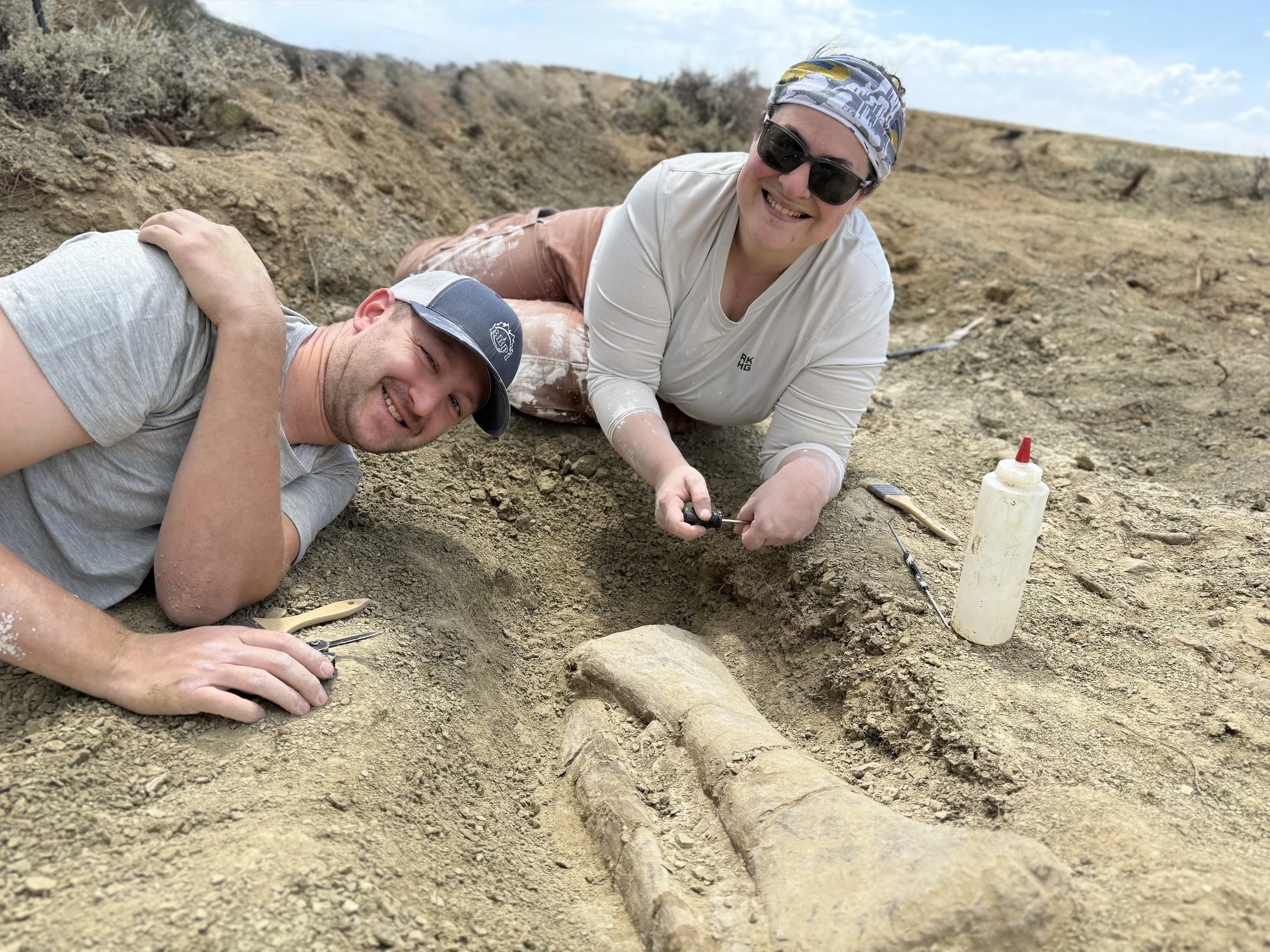Why the 2025 Field Season Rocked
Every field season is unique. Some bring breakthroughs, big or small. Some bring more questions than answers. Some make you sweat more than you'd like (Actually, all of them do that, but I digress). But every once in a while, a season comes along that delivers all of the above...and then some. That was the 2025 field season for Elevation Science.
This year’s expedition was full of science, surprises, and incredible people who helped make it all happen. From lovely sauropod toes to some wicked theropod claws to beautifully preserved vertebrae, the discoveries we made this season are already helping us better understand the animals and ecosystems of the Jurassic Period, especially in our northern region of the Morrison Formation.
Here are just a few of the highlights…
Discoveries Big and Small
At the Mother’s Day Quarry, Pit 4 yielded a 2.5 cm (~1 inch) sauropod tooth, the first ever from that part of the site! It was discovered by Week One participant Lisbeth Wolf during her very first time on the expedition. Mother's Day also gave us more of those famous skin impressions (the same skin impressions used as a reference for Diplodocus models in a museum in Germany!) and possible gastroliths (stones swallowed by some dinosaurs to help with digestion), and we began expanding into the hillside of Pit 4 to see if we could begin to find the extent of the bone layer. By the end of the season, we made excellent progress.
One of the most exciting new finds of the season came from a site we're calling SW-B. It was discovered by returning participant Mary Rose, who spotted a sauropod vertebra while retrieving digging tools, on the very first day of the field season! The bone was lying, partially hidden, right in the dirt, along a path we've walked for years. That lucky glance down led to more vertebrae, ribs, toes, limb bones, and a complete left leg of an Allosaurus — femur, tibia, fibula, toes and claws... The whole package! We believe SW-B may be connected to the Skyewalker site, as both appear to share the same lithofacies (rock layers that help us interpret the environments in which sediments were originally deposited) and depositional environment: a low-energy, anoxic, freshwater lacustrine setting. This kind of environment is great for preserving bones in excellent condition, as we're seeing more and more with each bone we find!
Skyewalker itself, discovered in 2023, grew dramatically this season; in fact, it was almost unrecognizable by the time the season came to a close! We removed the original femur found in 2023, uncovered two new femora (thigh bones, one nearly 5 feet long!), and recovered a beautiful block of articulated cervical (neck) vertebrae of a young sauropod. That jacket was so large that we had to build a pallet underneath it to move it safely and efficiently, complete with wooden planks, eye bolts, tow straps, and some very creative engineering from our team. One of the new femora, also belonging to a sauropod, was even discovered by a 13-year-old Daily Visitor named Blair on her second day and, in a fun little twist, her twin sister Camilla had discovered a beautifully articulated set of lower limb bones just a few feet away! The site also revealed more theropod and sauropod teeth, smaller vertebrae that may belong to some kind of early ornithopod, and more evidence that multiple species are represented. Skyewalker is no longer a single animal like we originally thought!
At LZ Blue, we recovered an 86 cm (almost 3 feet!) long Allosaurus femur, one of the largest we’ve worked on in this area. The sediments here tell us a lot: part of the site was once a fast-moving stream that could shift and line up bones with the current, while other layers represent a quieter floodplain with seasonal changes. Those conditions help explain why the fossils here vary in orientation and preservation; the fossils here also show evidence of many different kinds of dinosaurs from Allosaurus to Barosaurus and even some Stegosaurus material!
Meanwhile, Hovda, a multitaxa bonebed first discovered in 2024, saw its first year of excavation this year. Hovda contains sauropod, theropod, and early ornithopod material, though we closed this site down partway through the season to focus our efforts on some exciting finds in the nearby sites. Like LZ Blue, Hovda likely formed in a seasonal floodplain setting, a place where dinosaurs likely passed through often. Periodic flooding helped bury and preserve a wide mix of fossils in this area, which is exactly what we've been seeing as we continue to find fossils here.
M&M, originally a single theropod site discovered in 2022, continues to surprise us. This year we found Allosaurus teeth, a beautiful new claw, an ornithopod humerus and more material that may belong to this kind of dinosaur, sauropod material such as vertebrae, and so much more that can only fit into our field notebooks. Clearly, this site isn't finished showing off for us!
Science Beyond the Bones
This season, our team also focused on detailed mapping and GPS work at every site. That kind of spatial data is essential for modern paleontology. It helps us document fossil context, analyze patterns of preservation and deposition, and better understand the ancient ecosystems these animals lived in. We're also working to better understand exactly what kinds of environments we’re digging in; what they were like, how they changed over time, and how they fit together stratigraphically. With each layer we study and every new dig site we discover, we get a little closer to reconstructing what this landscape looked like 150 million years ago.
Outreach & Community
We didn’t just dig up dinosaurs; we connected with the people who love them. Through outreach programs, pop-up museums, guests visiting the sites, and public presentations, we engaged with hundreds of people in our favorite little corner of Montana. Locals of all ages came out to learn more about our work in the Bighorn Basin; many of them joined us in the field to get their hands dirty and were already asking when they could come back!
The People Who Made It Possible
This summer also looked a little different for our staff. For the first time in many years, our fearless leader Schein wasn’t able to join us for most of the season; he stayed home to be with his family during a difficult time. In his absence, Rick Schmidt stepped up to lead the crew and did a phenomenal job keeping us focused, supported, and moving forward. I’m incredibly proud of our team for the way everyone came together, leaned on each other, and made this season not just successful, but one full of professional growth. We work well together, and this year proved it more than ever.
Before I close out this season recap, I want to send a few special shoutouts. This year we probably had more flat tires than any other season combined. Thankfully, the people at Rocky Mountain Tire were there for us every time. They patched and replaced our tires with kindness, speed, and understanding. Coffee Factory Roasters in Red Lodge also came through in a pinch, helping us resupply both our burlap supply and our caffeine when we were approaching the finish line. And a huge thank-you to Tim Kirk and the Montana Limestone Company for their help during extraction; lending us their machinery, expertise, and time to help us move backfill and lift some of our heaviest jackets.
To our staff, interns, participants, and friends: thank you. Whether you hauled tools and supplies uphill, helped with making field jackets, prospected for new sites, dug trenches under the hot sun, glued a fossil that wanted to fall apart on you, captured the moments through pictures or video, cut and sorted burlap, or filled water bottles out of the kindness of your heart... this season wouldn’t have been what it was without you.
We’ve got months, even years, of work ahead of us in the lab and the field, and likely a lot of science to write about. But this summer reminded us, once again, why we dig in the first place. There’s still so much to discover and we already can't wait to get back out there!












